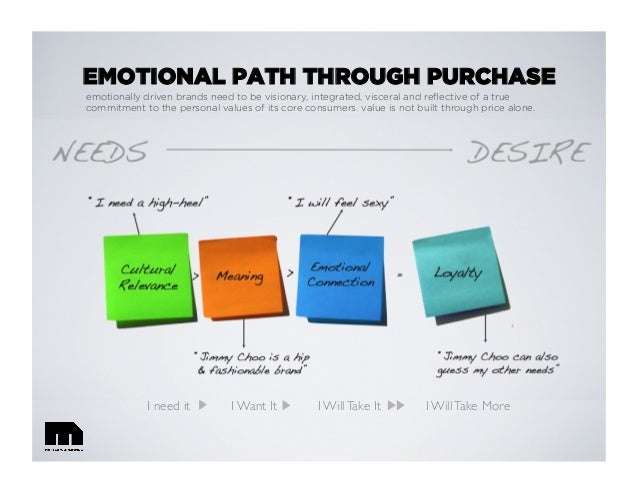
The idea of emotive branding — and the creation of our agency, Emotive Brand — flowed from our desire to make a positive difference in the way people and brands interacted with each other. These were our goals
- Bridge the gap between commerce and civility.
- Create brands that people appreciate, respect, and actively seek out.
- Help employees of brands feel better about their jobs.
- Make partners and suppliers vie for the opportunity to work with our clients.
- See communities welcome our clients’ brands with open arms.
As a result of all of this goodwill, our clients’ brands would thrive and prosper.
Realizing the Value of Meaning Something More
We came to those goals through two major realizations:
First, as consumers ourselves, we noticed that only a handful of brands really went out of their way to mean anything to us. When they did make a connection — wow, it was love. We’d go out of our way to interact and engage these brands. We even felt disappointed when we had to settle for something less. We’d get excited when other people started talking about these brands and chime in with our most recent, “I can top that!” story. These brands had come to mean something to us because they had a clear reason for being and made us feel something good, time and time again.
On the other hand, zillions of brands never really hit our emotional radar. These brands meant almost nothing to us — even though we’d heard about them, or even bought and used dozens of the brands regularly.
A Problem in the “Brand Decks”
Second, as brand experts, we saw first hand why so many brands fell flat — lackluster and bland — in the minds of customers. As designers, copywriters, and strategists, we work on virtually every aspect of communication from identity to websites to advertising to point-of-sale to employee recruitment and beyond. Behind each piece of work there’s always a brief — and often attached to the brief there’s a two-hundred some page PDF titled “About the Brand.”
Reading through many of these so-called “brand decks,” we quickly recognized a problem. In fact, the “brand decks” were the problem.
Traditional brand thinking results from business people from branding agencies talking to business people within client organizations. The language they use is full of industry jargon, client-speak, and solely rational thinking. Everything is expounded upon, nothing is simplified, and little is made human. And after several rounds of review, the final documents show the scars of compromise.
And what do these documents lack? The brand’s meaning as defined by its reason for being (why it does what it does) and how the brand wants people to feel (how the brand connects emotionally with customers). Brand decks, on the whole, left out what matters most to us as consumers and businesses and what we admire most in the great brands out there.
So we asked the question: What if meaning was the entry point into brand thinking rather than an appendage at the end? And that, folks, is how Emotive Brand was born.
No comments:
Post a Comment